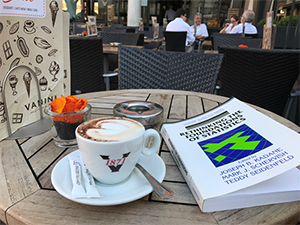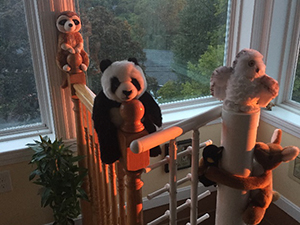Contributing Editor Xiao-Li Meng has attended some great meetings, with exotic acronyms, over the summer. He writes:
No, these are not Chinglish or Pinyin. If you haven’t heard of ISIPTA-ECSQARU, then you are in the good company of 95–99% of statisticians and probabilists. I certainly hadn’t, until BFF4 (https://imstat.org/2017/05/xl-files-bayesian-fiducial-and-frequentist-bff4ever/), thanks to Teddy Seidenfeld’s timely introduction. I could not have arranged a better sabbatical orientation than de-deaning in the paradise of Lugano and learning about the paradoxes of imprecise probability. The joint meeting of the 10th International Symposium on Imprecise Probability: Theories and Applications (ISIPTA) and the 14th European Conference on Symbolic and Quantitative Approaches to Reasoning with Uncertainty (ECSQARU), from July 10–14, provided me with the therapeutic freedom of not needing to figure out some smart phrases (for giving a talk) or smiling faces (of people I don’t recall). For the first time, I felt like a post-doc venturing into a neighboring field, and could say “Mom, I made it!” (Ages ago, when I told my mother that I had become an Assistant Professor, her response was, “So you didn’t make it to post-doc?” In Chinese, “post-doc” sounds like “beyond doctor” but “Assistant Professor” more like a TA.)
My glorious post-doctoral feeling was troubled by less sunny thoughts about the isolation of disciplines that share virtually the same goal. Such separation has led to much reinventing of wheels and repeating of mistakes, a clear waste of intellectual and other resources. But I do wonder if it also helped foster some very different perspectives that otherwise could not have survived. For example, as statisticians, our reactions to the Dempster–Shafer theory of belief function have largely been either, “What’s that?” or “Who believes in belief functions?” Yet in ISIPTA-ECSQARU, Dempster’s combining rule was invoked far more frequently than Bayes’ rule.
There is also a Belief Function and Applications Society (BFAS), and its 2018 conference will be jointly held with SMPS: Soft Methods in Probability and Statistics. Whereas the statistical community has generally shunned anything that is “softer” than probability, a recent anecdote reminded me that the “hardness” we statisticians have imposed on scientists may also be a contributing factor to the outcry of non-replicability. A student of mine asked an astrophysicist collaborator if he could provide some examples where he only has vague prior information, such as knowing a Poisson intensity is between 3 and 5, but nothing else. The astrophysicist was rather amused: “Some examples? Everything I do! It is you guys that always push us to make up an entire prior!” With the growing concerns of non-replicable studies, perhaps it is the time for us statisticians to soften our hearts towards these soft methods that are designed to reduce the amount of “made-ups”?
Incidentally, my heart was further softened by the panda, lynx, and elephant that appeared at the second Workshop on High-Order Asymptotics and Post-Selection Inference (WHOA-PSI) at Washington University in St. Louis, August 12–14. Rest assured, no animal or human being was harmed. Todd Kuffner, a multi-talented composer, singer, and thinker, had this cool idea of using stuffed animals for timing speakers. Panda’s charm reminds me that I still have five minutes to charm the audience (and thanks to Todd, it now charms me every day: see below). Lynx is known for its speed: I have one minute to run for my life. But when the elephant is in the room, no one would be paying any attention to me, even if I were showcasing deep learning via its ability to reject the Riemann hypothesis with a p<0.005.
To ensure enough audience for the 7:45am sessions, Todd had another creative idea: 15-minute morning entertainment starting at 7:30am. With over 7000 YouTube subscribers (https://www.youtube.com/user/toddmakesnoise), Todd had little trouble enhancing the morning coffee with original songs that are as beautiful as his mind. He also provided me with a 15-minutes-of-fame slot: “Laughing early with XL,” another first-time adventure for me. My opening act (“A professor was dreaming that he was teaching. He woke up. He was.”) apparently was not as pungent for statisticians as “Why are standard deviations always 6?” (https://imstat.org/2013/02/the-xl-files-a-fundamental-link-between-statistics-and-humor). Nevertheless, I am ready to make n=2…
So what softened your heart (or woke you up) this summer?
Sunrise with Teddy’s paper; and sunset with Todd’s panda


Comments on “XL-Files: ISIPTA-ECSQARU, BFAS-SMPS & WHOA-PSI”